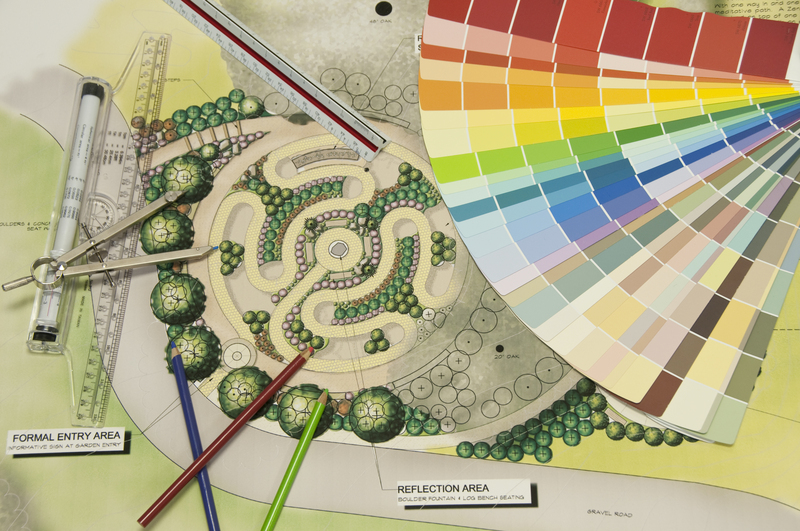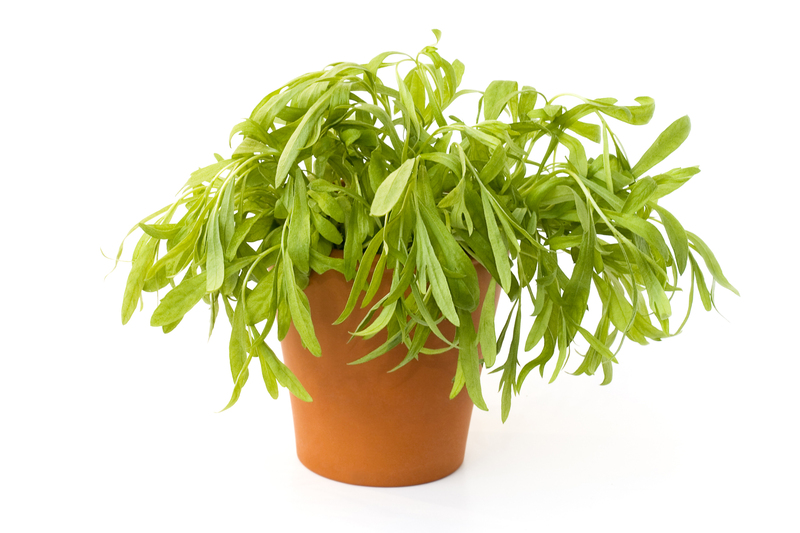Paw-Safe Planting Tips for Dog Owners
Posted on 18/08/2025
Paw-Safe Planting Tips for Dog Owners
Creating a beautiful garden is a joy for many, but for those who share their homes with playful pups, safety must come first. Pets, especially curious dogs, love to explore, sniff, chew, and even dig up parts of the garden. Becoming a dog-friendly gardener isn't just about aesthetics--it's about creating a harmonious, secure outdoor space. This comprehensive guide covers the essentials of paw-safe planting, providing you with actionable advice and inspiration for a garden that's safe and enjoyable for both you and your four-legged friends.

Why Paw-Safe Planting Matters
Many common garden plants, mulches, and garden care products can pose a threat to dogs if ingested, touched, or simply if they roll through them. Paw-safe landscapes help reduce vet visits and keep your dog (and your peace of mind) intact. Plus, a thoughtfully designed, dog-friendly garden can minimize destructive digging or trampling, as dogs are less likely to be drawn to hazardous plants or areas you want them to avoid.
1. Understanding Plant Toxicity and Dogs
Some plants are toxic to dogs and can result in symptoms ranging from mild stomach upset to severe poisoning or even death. The American Society for the Prevention of Cruelty to Animals (ASPCA) and other veterinary organizations have extensive lists of plants known to be harmful to pets. When planning your garden, familiarize yourself with these plants to ensure a truly dog-safe planting environment.
- Lily of the Valley - Can cause vomiting, heart arrhythmia, and seizures.
- Sago Palm - Extremely toxic; even a small amount can be fatal.
- Oleander - Highly poisonous, causing vomiting, heart issues, and sometimes death.
- Daffodils - Bulbs are especially toxic, leading to severe digestive issues.
- Azaleas & Rhododendrons - Affect cardiovascular and nervous systems.
- Foxglove - Known to cause heart failure in dogs.
- Castor Beans - Contains ricin, a potent toxin.
Always check the safety of new plants before introducing them to your yard.
Paw-Safe Plants: Top Choices for Dog-Friendly Gardens
Opt for non-toxic plants and grass species that stand up to pet wear and tear. These plants are both beautiful and safe for curious canines.
- Marigolds (Tagetes) - Bright blooms, safe for pets, and can even help repel unwanted insects.
- Sunflowers - Tall, cheerful, and non-toxic.
- Snapdragons - Add color to your borders without risking your pup's health.
- Roses - The flowers are safe; however, watch for thorns which can cause injury.
- Basil, rosemary, thyme, parsley - Fresh herbs that are not only paw-safe but also culinary delights.
- Cornflowers, zinnias, violets - Hardy and safe.
- Dog-safe grasses like buffalo grass or fescue.
Tip: When introducing new plants, look up their Latin and common names for double assurance about their safety.
Design Strategies for Paw-Safe Gardens
Secure Boundaries
- Fencing: High, sturdy, and with no gaps to prevent escapes or unwanted visits to toxic neighbors.
Dedicated Digging Areas
- Sandpits or mulch zones can keep your dog's digging instincts away from precious flowerbeds.
Pathways and Play Zones
- Use paw-friendly materials such as smooth flagstones, wood chips (avoid cocoa mulch), or turf.
- Designate a play area with shade and water access.
Mulch and Ground Cover Selection
- Avoid cocoa mulch (contains theobromine, toxic to dogs).
- Choose untreated wood bark or cedar chips instead.
- Consider creeping thyme, Irish moss, or clover as lush ground covers that are soft underfoot and safe if nibbled.
Common Hazards to Remove or Replace in Your Garden
Besides plants, certain gardening products and landscaping features can pose risks. For a truly pet-safe landscape, consider addressing the following:
- Pesticides and herbicides: Always use pet-safe alternatives. Never allow pets on treated lawns until completely dry.
- Fertilizers: Blood meal, bone meal, and iron-rich fertilizers are toxic. Use organic compost instead.
- Sharp tools:** Store away from areas where dogs roam.
- Ponds and water features: Make sure they're shallow or securely fenced for canine safety.
Smart Planting Techniques for Dog Owners
Protecting Young Plants
- Use small fences or garden mesh to guard seedlings from trampling.
- Clearly mark new plantings so your pup learns boundaries.
Using Raised Beds & Container Gardening
- Elevated beds and sturdy pots keep plants out of paw's reach and reduce digging.
- Use patio planters for herbs and edible greens.
Strategic Plant Placement
- Position vulnerable or special plants behind fencing or in less-trafficked areas.
- Reserve robust, dog-tough species for the edges of lawns or dog paths.
Enrichment & Training: Guiding Canine Behavior in the Garden
Smart paw-safe planting for pet owners involves not just plant selection, but also encouraging positive dog behaviors.
- Teach "leave it": Train your dog to avoid certain areas or plants.
- Provide enrichment: Add interactive toys, dog tunnels, or treat-dispensing puzzles to distract your pup from outdoor mischief.
- Frequent walks: Well-exercised dogs are less likely to dig or chew in boredom.
Remember, consistent positive reinforcement goes a long way in maintaining both a thriving garden and a well-behaved pet.
Water Safety in Pet-Friendly Gardens
- Fresh water access: Always provide a clean bowl or pet fountain in the garden.
- Pond plants: Opt for non-toxic water plants like water lettuce, water hyacinth, and duckweed.
- Warn about algae: Blue-green algae (cyanobacteria) is deadly if ingested by dogs. Keep water features clean.
Seasonal Considerations for Dog-Safe Planting
- Spring: Avoid bulbs like lilies, crocuses, and hyacinths. Opt for early-flowering violets or pansies.
- Summer: Watch for heatstroke; provide shady spots and drought-tolerant, non-toxic plants.
- Autumn: Clean up fallen toxic leaves and nuts (oak, horse chestnut, black walnut).
- Winter: Use pet-safe deicers and keep Christmas plants (poinsettias, holly, mistletoe) out of reach.
Creating a Dog-Friendly Edible Garden
Gardening for dogs can be delicious! Some herbs, fruits, and veggies are not only safe but beneficial for your pup. A paw-safe edible garden can provide fresh treats--just introduce new foods slowly and observe for allergies.
- Dog-safe vegetables: Carrots, green beans, peas, cucumber, sweet potato.
- Safe fruits: Blueberries, strawberries, apples (no seeds), cantaloupe.
- Pup-friendly herbs: Parsley, basil, mint, rosemary.
*Introduce new foods in moderation and avoid grapes, onions, leeks, tomatoes, and avocados.
Dealing With Common Garden Problems for Dog Owners
- Urine spots: Rinse areas with water to dilute acidity. Consider planting tougher, salt-tolerant grasses.
- Digging zones: Provide approved places with sand or soft earth.
- Trampled plants: Use protective edging, rocks, or large pots to create barriers.
Quick Solutions for Unexpected Hazards
- Immediate vet help: If you suspect your dog has eaten a harmful plant, call your vet or a pet poison helpline immediately.
- Label plants: Keep nursery tags and always know what's growing in your yard.

Paw-Safe Landscaping FAQ
- Can dogs and beautiful gardens co-exist?
Absolutely! With careful plant choices, smart garden design, and a little training, both you and your pup can thrive together outdoors. - Are artificial lawns safe?
High-quality, non-toxic artificial turf can be paw-friendly and helps avoid muddy paws, though it can get hot in summer. - What's the best mulch for dogs?
Plain wood chips, straw, or shredded pine bark. Avoid cocoa mulch and dyed products.
Conclusion: Happy Dogs, Healthy Gardens
With thoughtful planning, a love of gardening, and your dog's well-being in mind, you can curate a vibrant outdoor space without compromising safety. Focus on paw-friendly planting for dogs, stay informed about toxic threats, and nurture both your garden and your pup with enrichment and care. From choosing the right plants to setting smart boundaries, every positive change adds up to a pet-friendly oasis full of joy and lush growth.
Want more tips? Explore vet resources (ASPCA Plant Toxicity List, Pet Poison Helpline) or chat with local nurseries about dog-safe gardening in your area's climate.
Start planting for paws today--because every dog deserves a safe, green retreat!

